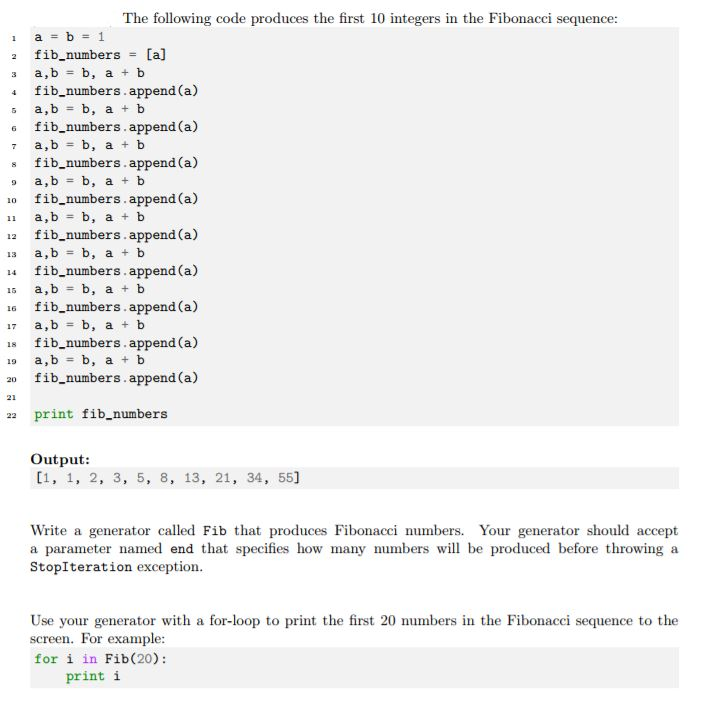Answered step by step
Verified Expert Solution
Question
1 Approved Answer
For Python 2.7 The following code produces the first 10 integers in the Fibonacci sequence: 1 a = b = 1 2 fib_numbers = [a]
For Python 2.7

Step by Step Solution
There are 3 Steps involved in it
Step: 1

Get Instant Access to Expert-Tailored Solutions
See step-by-step solutions with expert insights and AI powered tools for academic success
Step: 2

Step: 3

Ace Your Homework with AI
Get the answers you need in no time with our AI-driven, step-by-step assistance
Get Started


